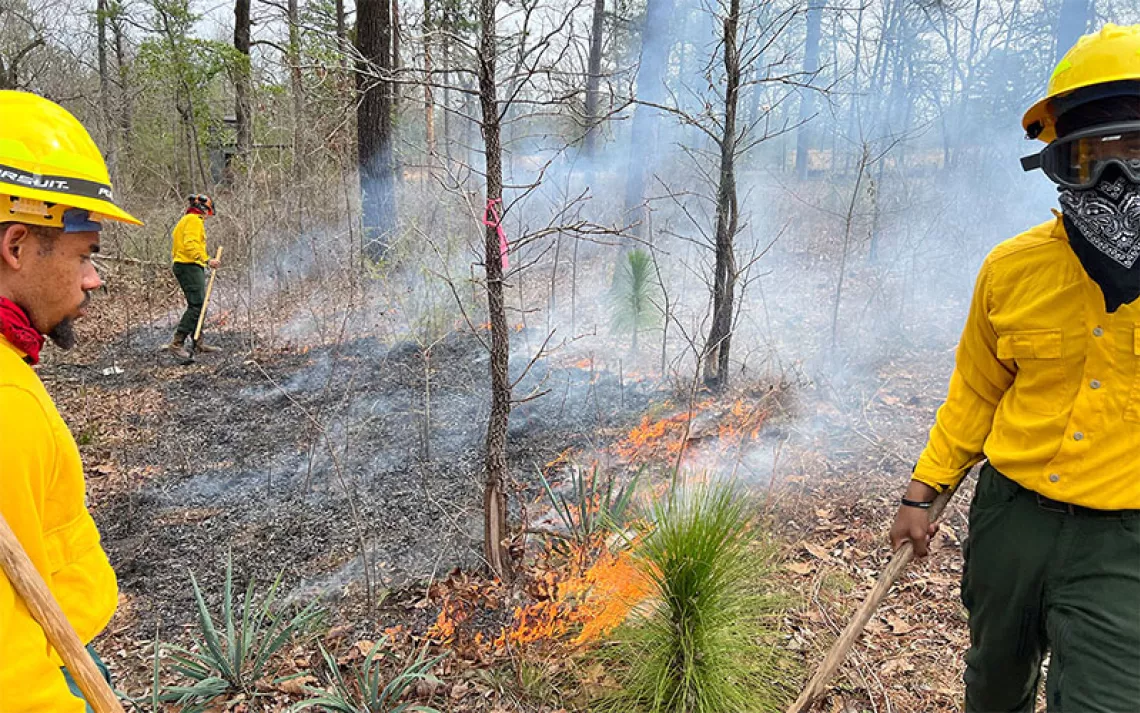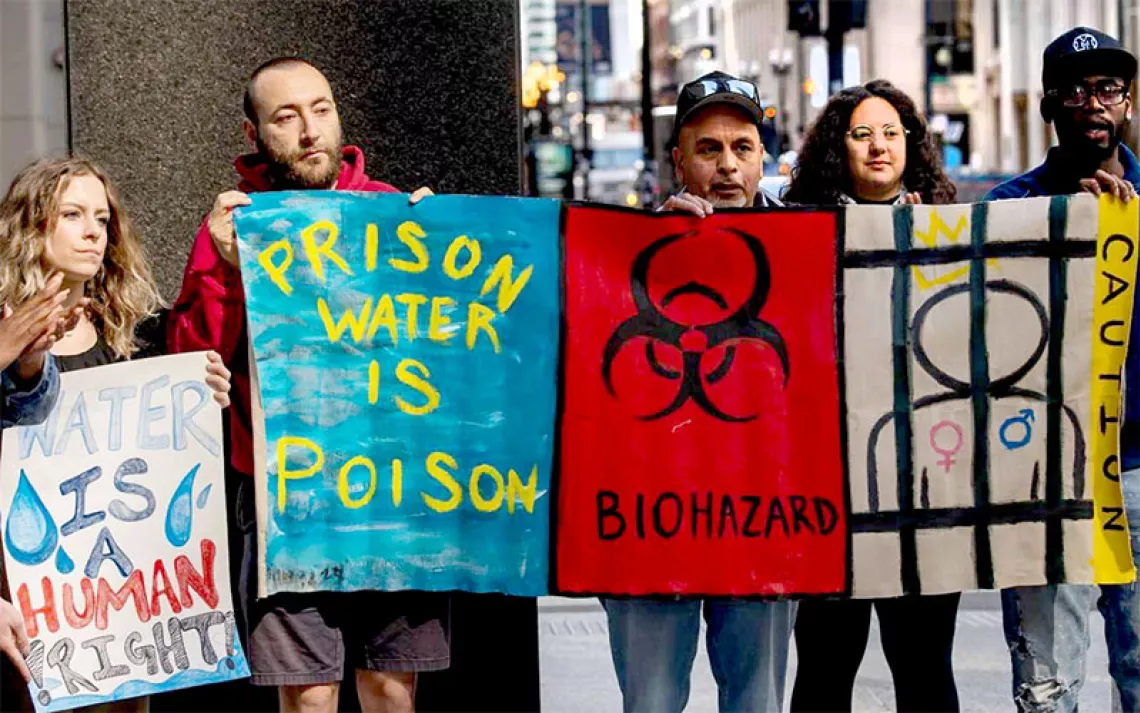The Science on Chlorpyrifos Is In, Even if Trump's EPA Doesn't Think So
Evidence of chlorpyrifos' negative effects has been mounting for years

Fidelia Morales in her front yard. The orange groves around her house are frequently sprayed with pesticides. | Photo by Wendy Becktold
Update: In early August, the Ninth Circuit Court of Appeals ruled that there was no justification for the EPA's March 2017 decision to reverse the ban on chlorpyrifos. The court ordered the agency to reinstate the ban within 60 days. In response, the EPA has filed a motion to extend the 60-day period and will likely seek other legal action to delay the ban.
FIDELIA MORALES WANTED to provide her young children with the tranquility she experienced growing up on a farm in Mexico. So, in 2006, the family moved from Los Angeles to the small farming community of Lindsay in California's Central Valley. She bought a house on an acre of land surrounded by orange groves.
Had Morales known what she knows now, she would not have chosen that property.
The kids got sick more often at their new home. Over time, Morales began to notice a pattern: Their headaches and upset stomachs happened frequently in the spring and the summer, when growers around her house were spraying the fields with pesticides. Sometimes she could see a fine mist drifting across the yard.
After one such incident in 2016, Morales filed a formal complaint with the county agricultural commissioner. An inspector came out to the property and found pesticide residue on the swing set.
Morales worries that one chemical she and her family have been exposed to is chlorpyrifos, which is heavily used on citrus fruit. In Tulare County, where Lindsay is located, growers used 181,182 pounds of it in 2016, the second-highest amount in the state, behind Kern County.
Chlorpyrifos is in a class of neurotoxins called organophosphates. The EPA banned it for indoor pest control in 2001, but 6 million pounds of it are applied annually to approximately 50 crops, including oranges, alfalfa, and almonds. In 2015, after a multiyear review, EPA scientists concluded that chlorpyrifos was harmful to human health and recommended that the agency ban it permanently. Then, just days before the ban was scheduled to go into effect in March 2017, newly appointed EPA administrator Scott Pruitt reversed it, on the grounds that the science was inconclusive.
But evidence of chlorpyrifos's negative effects, particularly on children in utero, has been mounting for years. In 2012, researchers at Columbia University found that the brains of children whose mothers had been exposed to chlorpyrifos while pregnant showed abnormalities in regions associated with attention, decision-making, language, and impulse control. A 2014 study by the University of California, Davis, showed an increased risk of autism spectrum disorder among children whose mothers lived within a mile of agricultural fields during their pregnancies. And researchers at UC Berkeley who have been tracking mothers and children in Salinas, California, for more than a decade have found that children who were exposed to organophosphates in utero score an average of seven IQ points lower than those who weren't.
So why say that the science on chlorpyrifos is inconclusive? "It's a really easy out for people who don't want to ban this chemical to say, 'We don't have solid proof,'" Kim Harley, a researcher in the Salinas study, says. "These are observational studies, but we have been very rigorous, and a number of other studies have yielded the same results. At a certain point, you have to say, 'How much proof do we need before we act?'"
"It's not perfect-laboratory-conditions science," explains Paul Towers, organizing director at Pesticide Action Network. "This is real-world science about how people are affected when something is sprayed in the orchard next to their house."
Pruitt's reversal may have had more to do with politics than science. His pick for deputy assistant administrator, Nancy B. Beck, had spent the previous five years as an executive at the American Chemistry Council. Dow Chemical, which manufactures chlorpyrifos under the brand name Vulcan, contributed $1 million to President Donald Trump's inaugural committee.
In response to federal inaction, the California Department of Pesticide Regulation has moved to restrict the use of chlorpyrifos. Since 2014, growers have had to file a notice of intent with the county agricultural commissioner before applying the pesticide, and the DPR has put into place even more stringent guidelines, such as increased buffer zones between application and residential areas. In July, the department moved to classify chlorpyrifos as a toxic air contaminant, a decision that will likely lead to even tighter restrictions.
Regulations like these are not enough, says Lupita Gonzalez, a farmworker and organizer with the Coalition Advocating for Pesticide Safety. At 24, she's been picking oranges for
12 years. Farmworkers are rarely informed when chlorpyrifos or other dangerous pesticides are being sprayed near them, she says. In May 2017, some farmworkers picking cabbage were sickened when chlorpyrifos drifted over from a nearby tangerine grove.
Since she began filing complaints, Morales has seen some improvements in how pesticides are applied around her house. For example, inspectors are more likely to be present. But when she sees growers spraying, she keeps her kids indoors.
Gonzalez and Morales are hoping that the state will ban chlorpyrifos outright, like Hawaii did in May. And two lawsuits filed by environmental groups and farmworker organizations could eventually force the EPA's hand.
"If people don't think there is real proof that this chemical is damaging our health, they should come live near the fields," Gonzalez says. "If they would see it, if they would live it, things would change."
This article was funded by the Sierra Club's Gender, Equity, and Environment program.
This article appeared in the September/October 2018 edition with the headline "Toxic Neighbors."
 The Magazine of The Sierra Club
The Magazine of The Sierra Club



